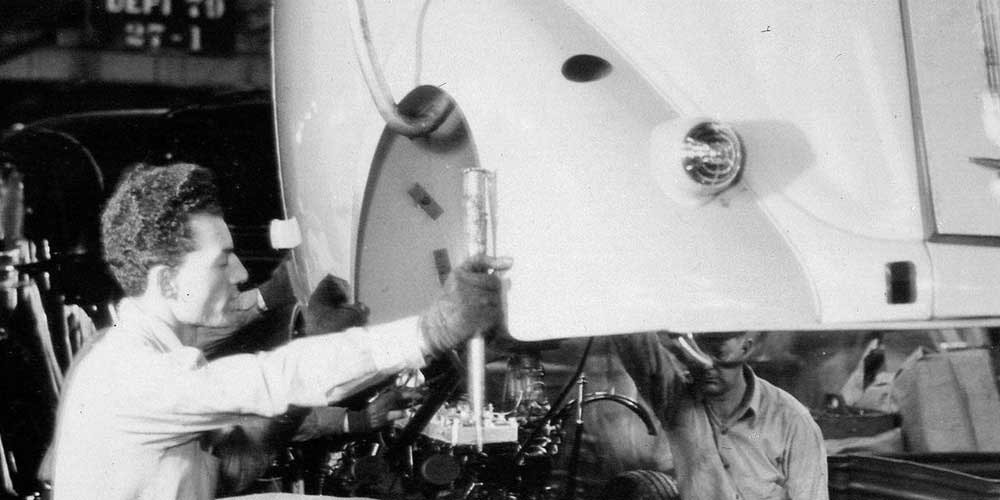By Greg Kowalski, Executive Director, Hamtramck Historical Museum
Photos courtesy of the Hamtramck Historical Museum
Published 10.26.2022
EDITOR’S NOTE: As part of Polish American Heritage Month, we present this story on the history of the city of Hamtramck.
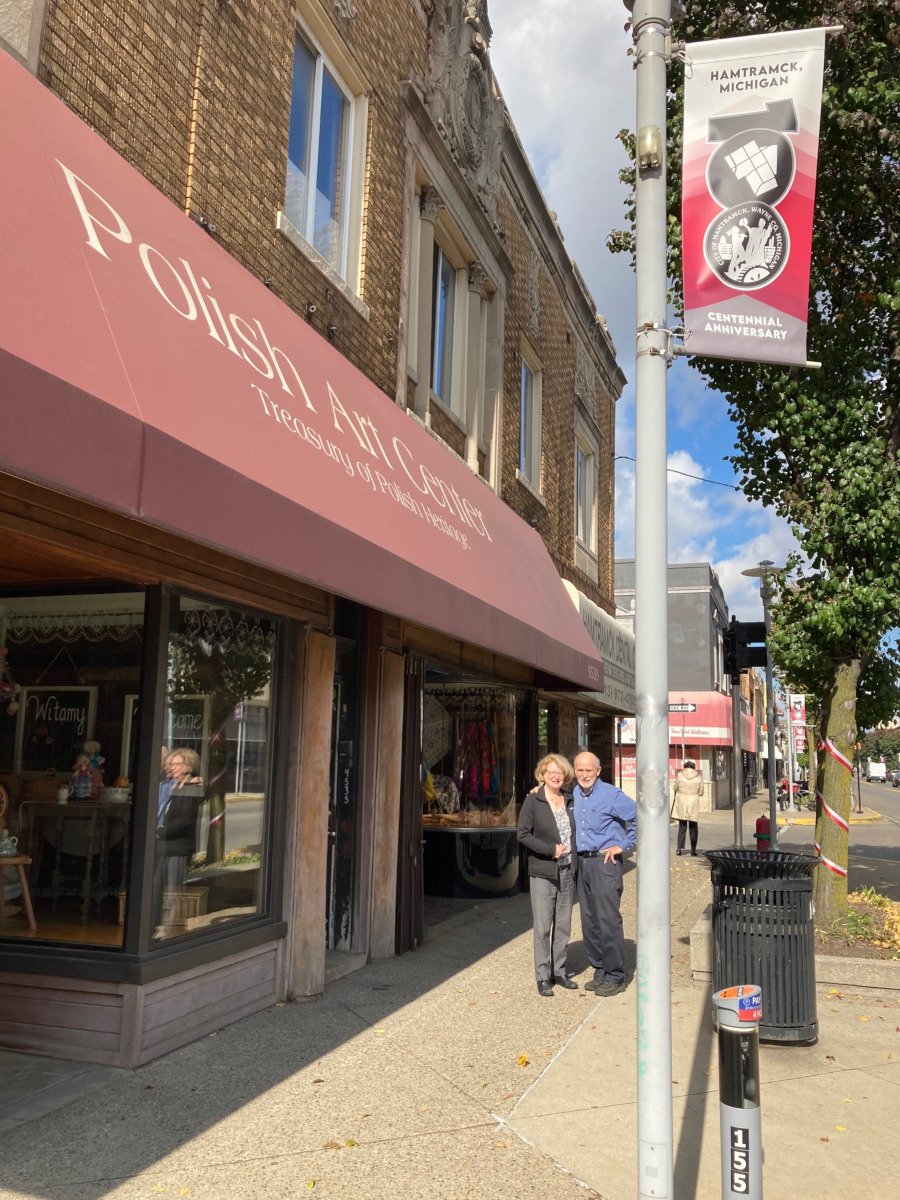
Joan and Ray Bittner own the popular Polish Art Center on Jos. Campau Avenue. It specializes in imported Polish items.
The mural reads: “Hamtramck: The world in two square miles.”
It’s painted on the side of a building in the middle of this small community enclave completely surrounded by the city of Detroit.
The words carry a lot of meaning, but they only hint at the remarkable nature and history of this town that occupies a perhaps unique position in America, although not geographically.
Hamtramck is the story of immigrants, hundreds of thousands of immigrants who flocked to the town mainly in the last 112 years. They transformed the town from a small farming village into a major industrial city in the space of 10 years.

As part of the city’s 100th anniversary celebration, three new markers were added to the grave of Col. John Francis Hamtramck at Veterans Memorial Park.
This amazing transformation is being celebrated this year as Hamtramck marks its 100th anniversary of incorporation as a city. Incorporation was a milestone that ensured the town would not be absorbed by big neighbor Detroit, and it was a demonstration of the power of the immigrant population and the tremendous impact of the auto industry.
Of course, Hamtramck goes much further back in time than 1922. The original Hamtramck Township was formed in 1798 and stretched roughly from Base Line (Eight Mile Road) to the Detroit River and from Woodward Avenue to Lake St. Clair. It was a vast area, but mainly consisted of swamps and forests. Through the 19th century French, and later German, farmers slowly cultivated the land, even as it was being annexed bit by bit by the growing city of Detroit. In 1900, a group of people living in the area of the current city boundaries agreed to form the village of Hamtramck. They mapped out an area of about 2.1 square miles, and in 1901, the village was officially created.
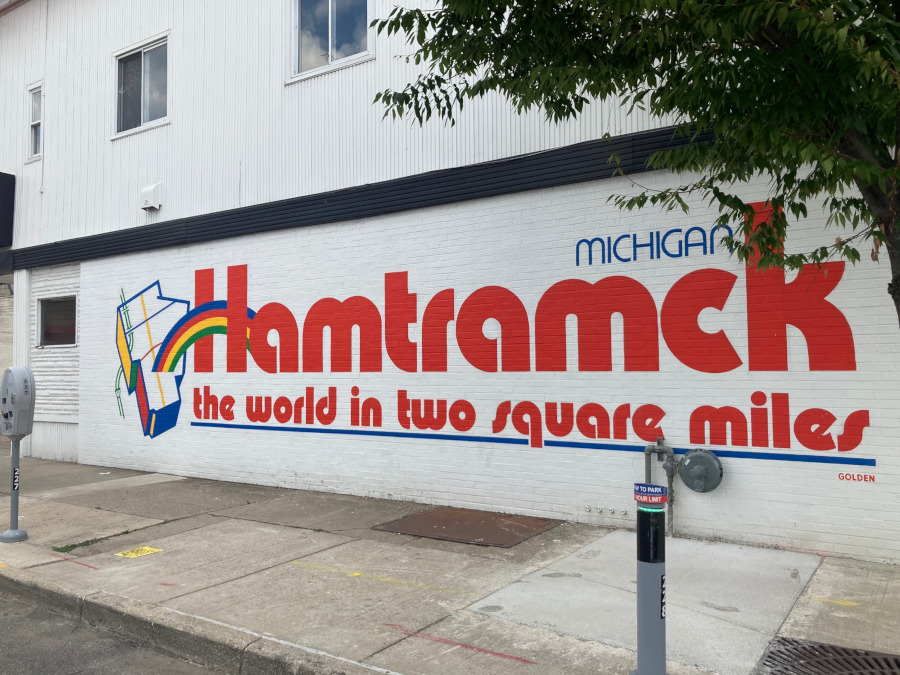
The mural proclaims ‘Hamtramck: The world in two square miles.’ It accurately sums up the city.
It was hardly more than a collection of a few shops, bars and wooden houses mainly clustered along Jos. Campau Avenue, the town’s main street. Only a few hundred people lived in the village at that time, and it grew slowly over the next decade. But certainly none of those residents could have foreseen what was to come.
In 1909, John and Horace Dodge came to Hamtramck, looked around and decided this was the right place to open a new factory. The brothers had a factory in Downtown Detroit, but it was much too small for their needs -- or their ambitions. They were building parts for Henry Ford, who has just opened a large new factory in Highland Park, another small town that slightly abutted Hamtramck. But the Dodge Brothers had big plans. They wanted to build their own cars, and for that the needed a major factory. By 1910, they owned a piece of property on the south side of Hamtramck and began building their factory.
This plant, which later became known as Dodge Main, would come to define Hamtramck, and in many ways, build modern Hamtramck.
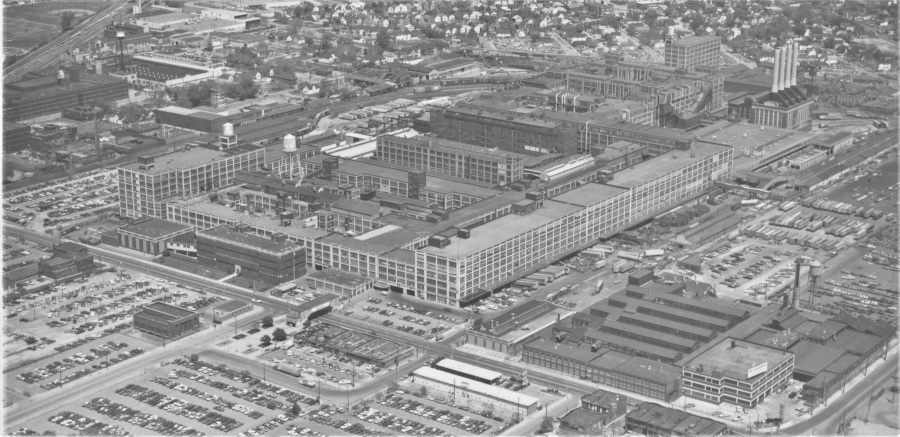
At its peak, the Dodge factory in Hamtramck employed about 48,000 people – mostly Poles.
To fulfill their plans, the Dodges needed workers, a lot of them. So, they put out a call for employees, and that was met in an astounding fashion. In 1910, there were about 3,500 residents in the 2.1-square-mile village of Hamtramck. In 1920, there were 48,000 residents. In 1915, the government did a special census of Hamtramck (and Highland Park, which was also undergoing a major growth) and determined that Hamtramck was growing at a rate of 50 percent greater than the rest of the nation.
Most of these workers were Polish immigrants, some who came directly from Poland but many from New York and Pennsylvania. Within a matter of a few years, Hamtramck acquired an international reputation as a Polish town in America. By 1930, Hamtramck had reached a population of 56,000 people, and about 83 percent of them were Polish or of Polish descent. Their imprint was profound. Polish became the unofficial language of Hamtramck. Store signs were written in Polish, virtually everyone spoke Polish, and on occasion city council meetings were conducted in Polish. Even non-Polish residents would speak Polish. That points out that while Hamtramck was primarily Polish it never was completely Polish. Black people, and immigrants from Germany, Russia and many other countries lived in Hamtramck, but they were overshadowed by the Poles. And it was the Poles, with assistance from the Black community, who led the effort to have Hamtramck incorporate as a city in 1922. That year saw Hamtramck elect its first Polish mayor, Peter Jezewski, which began a tradition of Polish politicians dominating election ballots almost completely until the mid-1990s.
Hamtramck became noted for its Polish bakeries, shops and restaurants as well as churches, where Polish Masses are still said today. But through the decades the Polish population has dwindled, as many residents were drawn to the suburbs with its newer housing stock that sport big lawns, garages and driveways -- features that are scarce in Hamtramck.
Still, Hamtramck endures. The 100th anniversary of incorporation was observed by a variety of activities in the city although they were somewhat subdued because of the Covid-19 pandemic. But there are banners on street poles on Jos. Campau marking the anniversary. And the grave of Col. John Francis Hamtramck, for whom the town is named, was given three new historical markers by the Sons of the American Revolution, the Daughters of the American Revolution and the Sons of the Revolution at memorable Memorial Day ceremony.
Today, Hamtramck’s Polish population amounts to only about eight percent of the city’s 27,000-some residents. Most of the Polish bakeries are gone and while there are dozens of restaurants in town, only two are authentic Polish. The city is much more diverse these days, and in fact, Hamtramck is one of the most diverse cities in the nation.
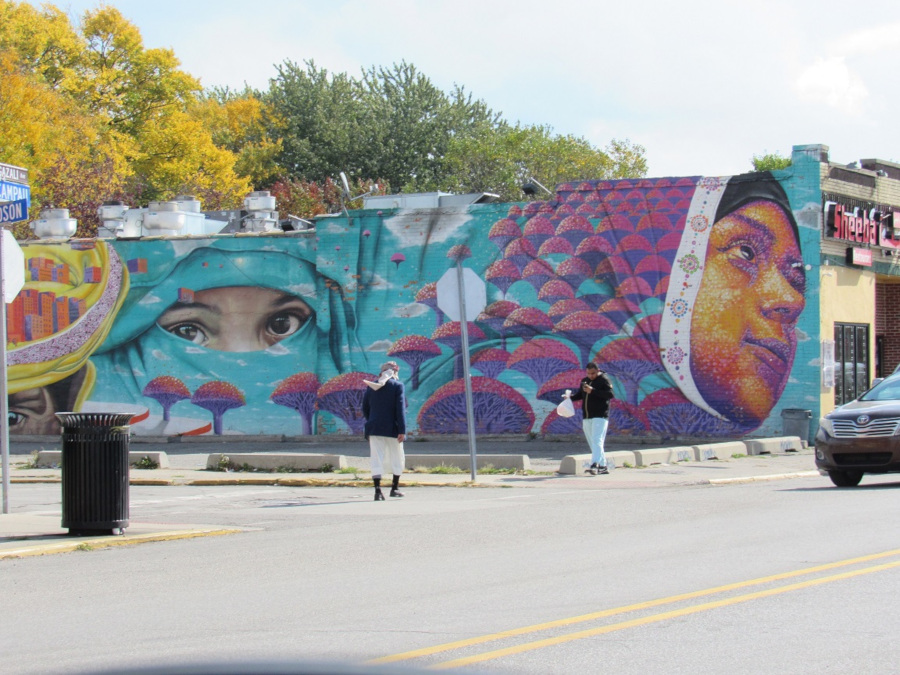
Although once a mainly Polish community, Hamtramck today is far more diverse, as reflected in this mural painted on the side of a Yemeni restaurant.
Forty years ago, the city adopted the motto “A Touch of Europe in America.” That was dropped not long ago for the more appropriate “The world in two square miles.”
But one thing hasn’t changed: Hamtramck’s welcoming spirit.
While the mural doesn’t say “welcome,” the people do.


